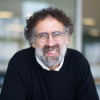Mitchel Resnick

Mitchel Resnick
Mitchel Resnickis LEGO Papert Professor of Learning Research, Director of the Okawa Center, and Director of the Lifelong Kindergarten group at the MIT Media Lab. Resnick currently serves as the head of the Media Arts and Sciences academic program, the academic program that grants master's degrees and Ph.Ds at the MIT Media Lab. Resnick's research group has developed a variety of educational tools that engage people in new types of design activities and learning experiences, including the "programmable bricks" that...
NationalityAmerican
ProfessionEducator
CountryUnited States of America
When you learn to read and write, it opens up opportunities for you to learn so many other things. When you learn to read, you can then read to learn. And it's the same thing with coding. If you learn to code, you can code to learn. Now some of the things you can learn are sort of obvious. You learn more about how computers work.
When you learn to code, it opens up for you to learn many other things.
With 'Scratch,' you create computer programs by snapping together graphical programming blocks, much like LEGO bricks, without any of the obscure syntax and punctuation of traditional programming languages. After creating an interactive 'Scratch' project, you can share it on the 'Scratch' website, just as you would share videos on YouTube.
With 'Scratch,' we want to let kids to be the creators. We want them to create interesting, dynamic things on the computer.
With 'Scratch,' our goal is to allow people to mix together all kinds of media, not just sounds, in creative ways. We want people to start from existing materials - grabbing an image, grabbing some sound, maybe even bits of someone else's program, and then extending them and mixing them to make them their own.
As I see it, whoever's doing the inventing is also doing most of the learning - and probably having most of the fun.
When you become fluent with language, it means you can write an entry in your journal or tell a joke to someone or write a letter to a friend. And it's similar with new technologies.
For me, the most important and distinguishing property of new media is interactivity. But how many people can actually create interactive games, animations, or simulations? Not very many. So, in my mind, very few people are truly literate with new media.
What I like to say is that we're trying to develop a new generation of technologies that are worthy of the next generation of kids.
Working as a correspondent for 'Business Week,' I felt that I was simply informing people, not empowering them. I saw a parallel problem in the world of education. In too many educational settings, teachers simply 'inform' or 'instruct' learners, rather than providing learners with opportunities to explore, experiment, and express themselves.
In my office, I have the creative things that kids have made for me over the years. The nice thing about the physical side of life is that I can have them on my shelf.
I'm pretty skeptical about a lot of the toys on the market, especially for young kids. Most of them just add these new technologies just to make more flashing lights.
Computer programming has been traditionally seen as something that is beyond most people - it's only for a special group with technical expertise and experience. We have developed 'Scratch' as a new type of programming language, which is much more accessible.
I started my career as a journalist, writing about science and technology for 'Business Week' magazine. Then I decided to make a career shift. I went to graduate school in computer science, and I began developing educational technologies - in particular, technologies to engage children in creative learning experiences.